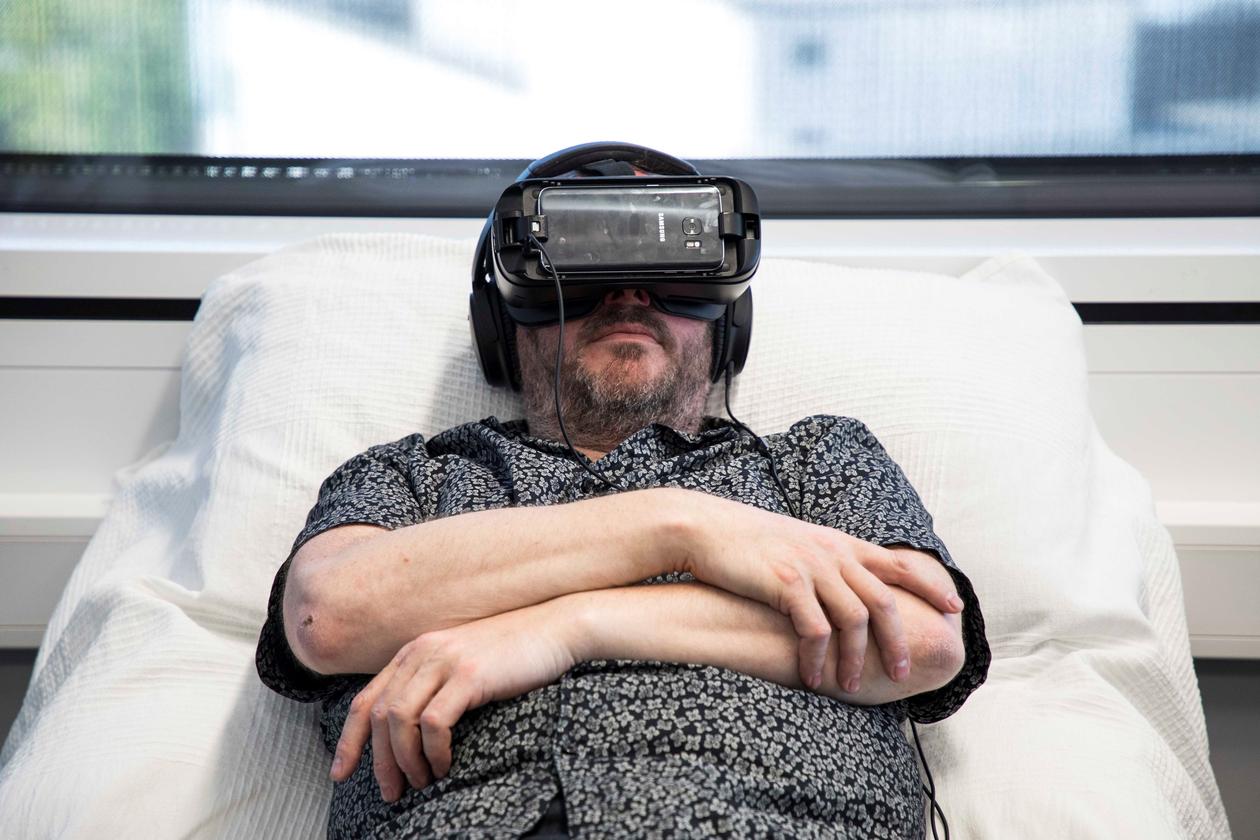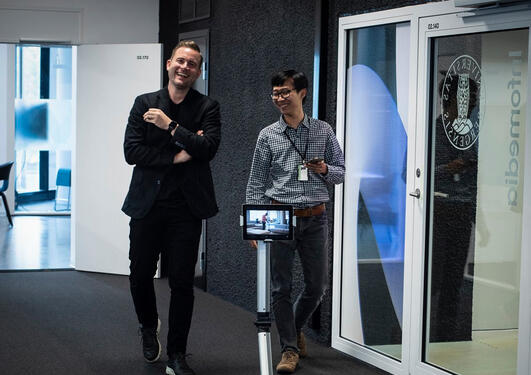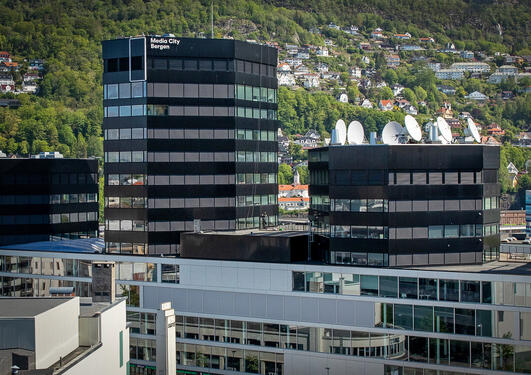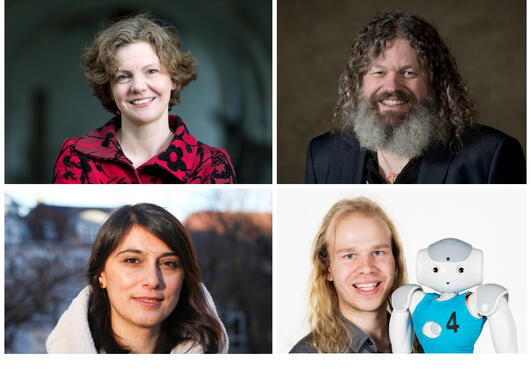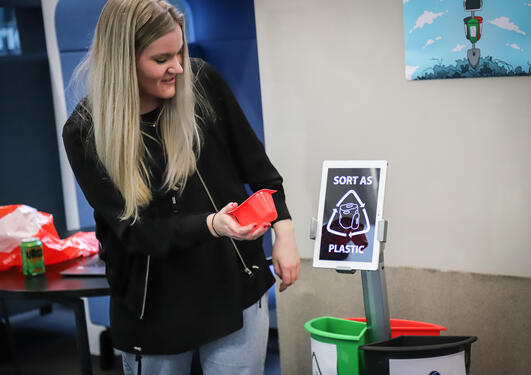Utforsker det ukjente
Professor Lars Nyre og studentene hans vil bruke den nyeste HTC Vive-teknologien. Sammen med studentene spør han det grunnleggende spørsmålet: Hva er dette? Hvordan kan det brukes?

Main content
(Resten av artikkelen foreligger på engelsk)
- This spring we will dare to go far out on a limb, says Lars Nyre.
The professor at the Department of Information and Media Studies is excited. He is responsible for the course MIX202: Design for Media Use.
In the forthcomming course, he and his students will explore the possibilities that lie in making journalism for HTC Vive glasses. It's a new technology: Neither Nyre nor the students have extensive experience with HTC Vive.
- It is a powerful medium, which gives an experience of mixed reality. The glasses have a camera on the outside, and a kind of screen inside, that allows what you see to be manipulated. In short, it's quite crazy, says Nyre.
New technology opens up for creative solutions
Using the HTC Vive technology, students will find out more about the perception of news, and simulate new forms of news dissemination. As the technology is quite novel, the equipment is expensive. The students must share the purchased glasses, which take Virtual reality technology a large step into the future.
It is all about innovation pedagogy. And, about exploring what waits ahead when a professor decides to put aside the expertise he has gained through his doctorate and publications, and together with the students try to ask some basic questions: What is this? And how can we use it?
Uncertainty as a method
- We construct an uncertainty that the students must learn to cope with, says Nyre.
The professor will not let nervousness get the upper hand: The course have a history of success. The method of Innovation pedagogy has been taught on the course for several years, and with good results.
- Free and experiment-driven basic research
Nyre compares innovation pedagogy with a journey of discovery. The students do not know where they are going, or what they will experience on their journey. This is free and experiment-driven basic research in its purest form, he says.
When students get to try new and immature technologies, they are to some extent bound by conventions. At the same time, they can test the limits the form of the media poses. Thrown into deep water, they have to collaborate to build the raft they need.
At the same time, the students are required to deliver a piece of work characterized by good craftsmanship. The students on the MIX202 course begin by interviewing media users, then they will conduct the technological experiments with Augmented Reality based on the outcome of the interviews.
The MIX202 course has one major goal: To make the students capable of dealing with the shifting trends and technology development they will meet when they start their career.
Change is the new normal
- The core activity of the lecturers and teachers is to convey established knowledge about historical conditions and values - about what already exists. Traditional courses have a conservational role. But what pervades us in top speed are new practices, new technologies, new issues.
Take the photo and film aesthetics, says Lars Nyre. He draws a rectangle with his hands.
- Earlier we talked about this surface. About aesthetics, technique and the Golden Cut. Now, you have 360 degrees cameras, and a lot of what applied to traditional image formats are no longer feasible.
- Technology development is too extensive for it to be left to only the hard sciences and technology. Perspectives and methods from the humanities and social sciences are needed, says professor Nyre.
An expertise in demand
MIX202 is organized in collaboration with the research project VisMedia, which is supported by the Norwegian Research Council, and industry players from the media and media technology industries in the media cluster Media City Bergen (MCB).
- The media technology industry needs people who have a robust ability to understand why changes happen. They also require people who are able to come up with useful, surprising and interesting technological solutions. Therefore, we have to dare to use the tech that we consider to bel completely new - and perhaps a little dangerous, says Lars Nyre.

- No one believes that the media industry will come to rest. In the future, too, the media industry will be full of paradoxes that cannot be solved. The course MIX202 gives students tools they can use also in the future, says Professor Lars Nyre. Photo: Simon Brandseth
